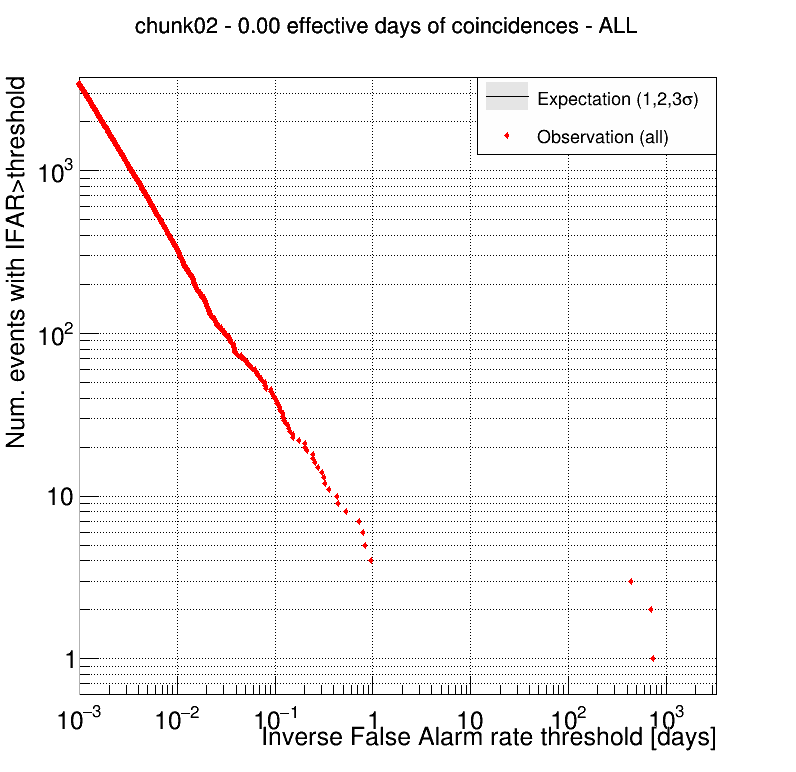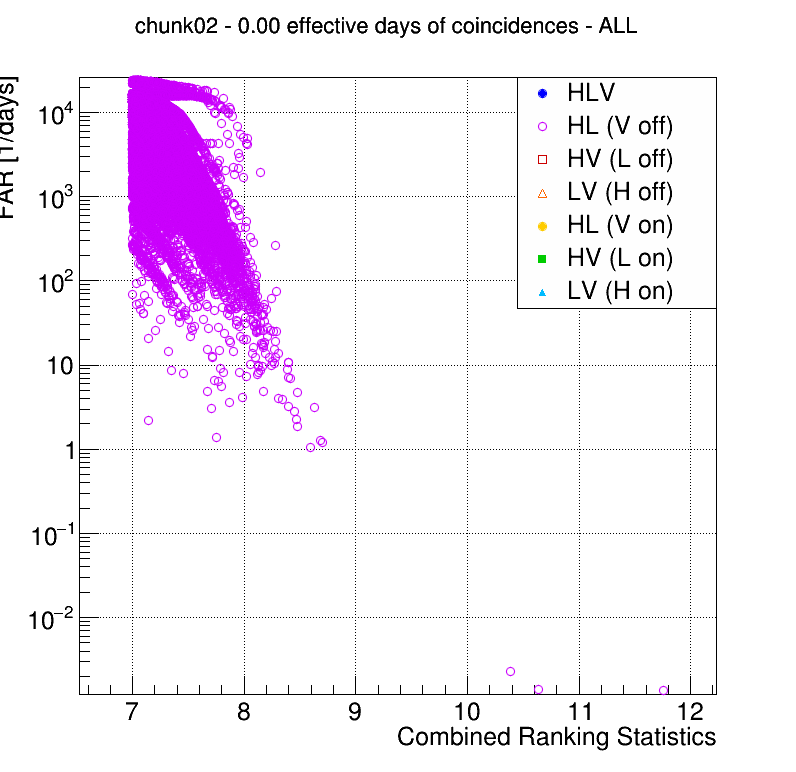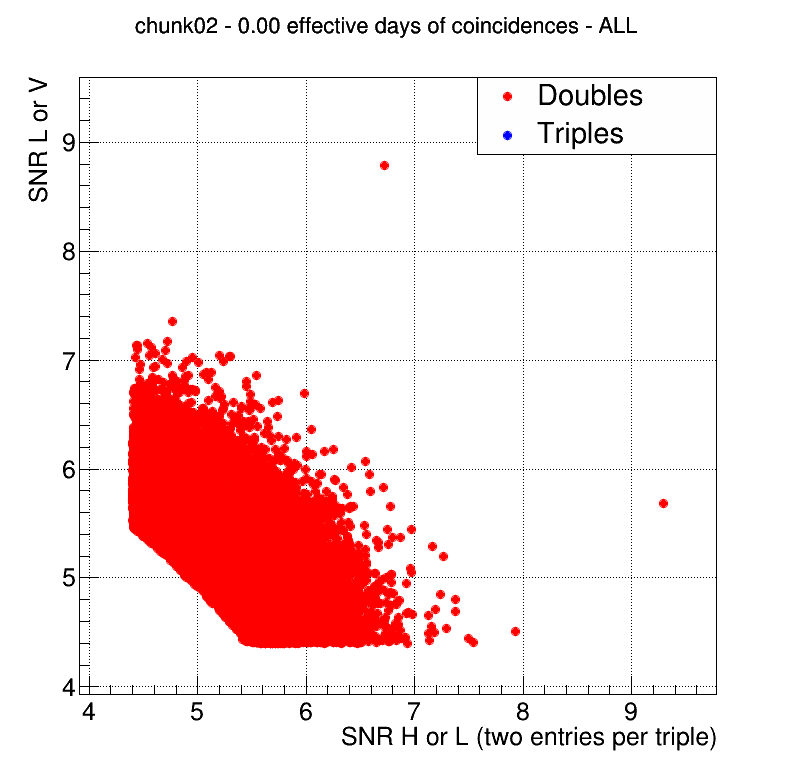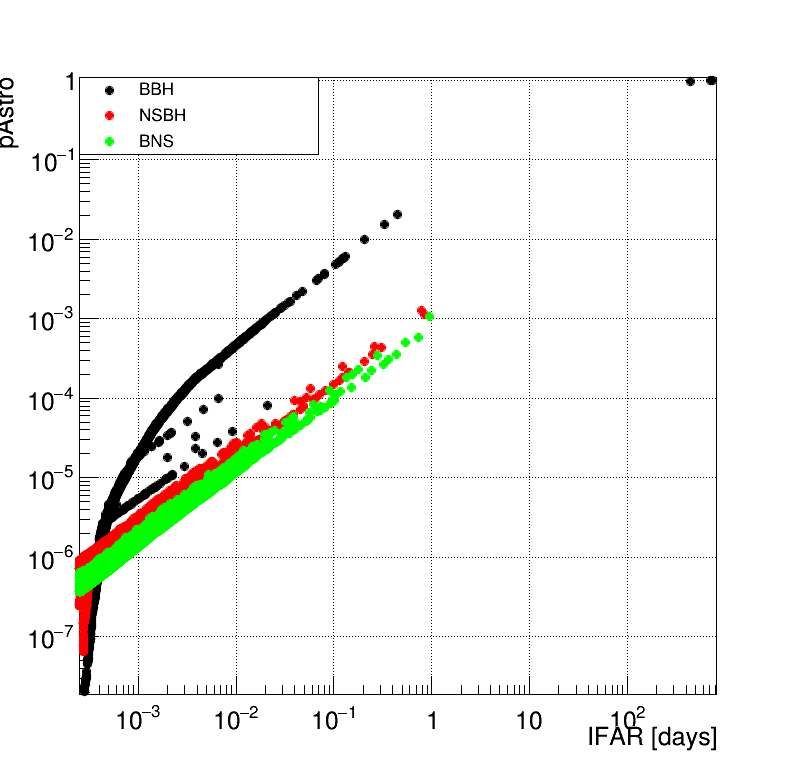This page collects the distributions we monitor to make sure the false alarm rate (FAR) we associate to an event is correct. The FAR is evaluated starting from all the single trigger events, that are used to build fake coincidences
FAR monitoring

Fig 3.3 : For double coincidences, number of events with IFAR higher than a threshold, as a function of the threshold value (red points). The grey band shows the expected distribution, with poissonian errors. The error bars on events show the systematic variation of the IFAR value due to noise non-stationarity.
Candidates
Below are listed the candidates observed on data, with a FAR smaller than 1/day, for the period from . If the table is empty, this means there were no candidates satisfying the requirement.
| GPS time | UTC | cRS | Detectors | IFAR [years] | FAR [Hz] | mchirp | mass1 | mass2 | SNR H | SNR L | pBBH | pNSBH | pBNS | iDQ | GraceDB |
|---|



